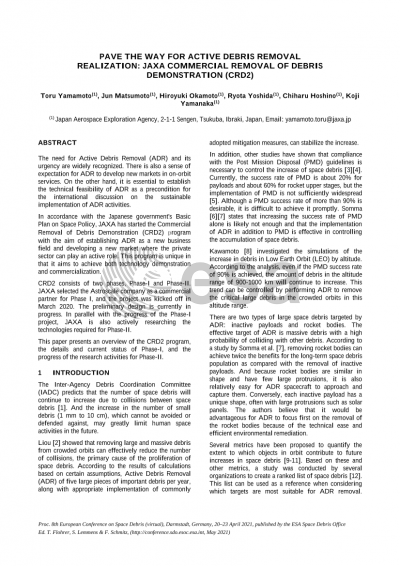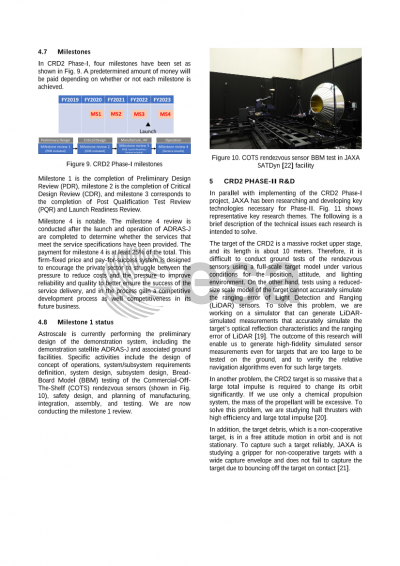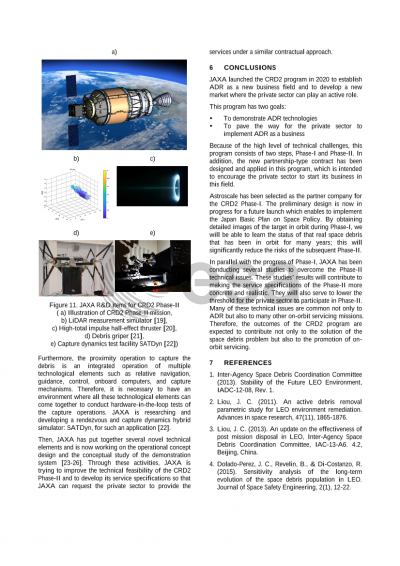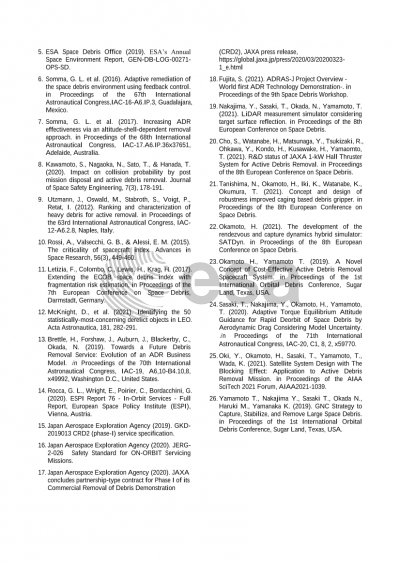Document details

Abstract
In order to suppress the growth of space debris, it is necessary to improve the success rate of Post Mission Disposal (PMD) in future missions, and at the same time, Active Debris Removal (ADR) is important as well. The targets of ADR are large space debris in crowded orbits. They are heavy non-cooperative targets so that multiple serious technical challenges must be overcome to realize the ADR missions. While the necessity and urgency of ADR is widely recognized, the establishment of technical feasibility is essential as a precondition for concrete discussions on the sustainable implementation of ADR activities in the international community.
JAXA has launched the Commercial Removal of Debris Demonstration (CRD2) program with the purpose of establishing ADR as a new business and developing a market by private sector. The program has two goals: to demonstrate ADR technology and to pave the way for the private sector to implement ADR as a business. The program is unique in that it aims to be both a technology demonstration and a commercialization program.
Large space debris removal is technically so challenging, that the program consists of two phases, Phase I and II. In Phase I, the demonstration spacecraft will approach the Japanese rocket upper stage which has been in orbit for years to perform proximity operations and take detailed images by which we can get knowledge of the target’s rotational motion and surface degradation. In the Phase I mission, the technology of safe rendezvous and proximity operations to space debris will be demonstrated. In Phase II, the target will be lowered and removed from the initial orbit in addition to the Phase I mission sequences.
Astroscale Corporation was selected as the partner company for the Phase I, and the project has been initiated in March 2020. The preliminary design activities are currently underway. JAXA supports Astroscale in developing the spacecraft by providing technical advices based on its extensive experience in past rendezvous missions and by preparing verification facilities for spacecraft proximity operations.
In parallel with the progress of the Phase I project, JAXA is also actively researching the capture and removal technologies to launch the next Phase II project. A dedicated capture mechanism for large non-stationary targets, a propulsion system for removal, and a facility for capture operations validation are being studied.
In this paper, the purpose and overview of the CRD2 program will be first described. An overview of the CRD2 partnership contract, which is specially designed to promote the growth of the private sector for the future commercialization of ADR, will also be presented. It will then report on the latest progress of the ongoing Phase I project, and research activities towards the launch of the Phase-II project as well.
Preview









